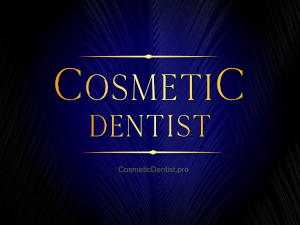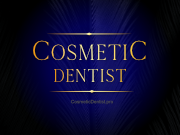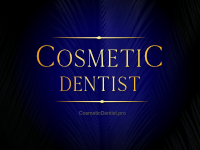Dental Implants
What is a Dental Implant?
A dental implant is a titanium screw that acts as a type of root replacement, used in to provide a support to help fill spaces left by missing teeth in the jaw. Once an implant fixture is placed in the jaw bone, the bone cells grows on and into its rough surface . This forms a structural and functional connection between the living bone and the implant fixture.
Why choose Dental Implants?
The titanium implant is fitted into bone where the tooth root would normally be. When fully integrated to the bone, a post (or abutment) is attached to the implant and a crown, bridge or denture is then placed over the abutment to replace the missing tooth or teeth.
Dental Implants can be used for a wide variety of purposes;
- Crown support (for a single tooth replacement implant).
- Bridge support (for multiple tooth replacement implants).
- Denture stabilisation and retention using special attachments.
The big advantage of a single tooth implant compared with a bridge is that it can replace the tooth without interfering with teeth on either side, unlike a bridge. Bridge teeth are joined together and dental floss cannot be passed in-between (unlike natural teeth or implant supported crowns).


The Dental Implant Treatment Proceedure
1. Treatment planning
Before implant placement, it is vital to carefully plan the treatment, when done well it requires a reverse engineering approach. We need to know the desired end result, combine this with the clinical findings and then formulate a suitable plan. Implant procedures can range in complexity from the placement of a single implant supporting a crown to that of a full mouth reconstruction.
2. Further investigations – often required during planning
After initial planning and scoping the patient will be referred for any required radiographic (or other) imaging.
A panoramic X-ray and other radiographic images can be used to help locate “vital structures” such as nerves and the position of critical anatomical features such as sinuses, nerve canals etc.
A CBCT Scan is more commonly used however, to provide a more accurate 3D evaluation of the relevant surrounding structures.
3. Implant fixture placement into bone
Once the implant fixture is placed into the bone, a cover screw is (often) placed over the implant, then the gingiva (gum) is sutured over the site before being allowed to heal for several months for ‘osseo-integration’ to occur between the titanium surface of the implant and jawbone.
Sometimes an implant can be placed immediately or relatively early (2 weeks to 3 months after extraction) into a tooth socket but this varies between cases.
Other complimentary surgical procedures
Missing teeth often lose some of the surrounding soft tissue and bone. If this is a significant amount, soft tissue and/or bone grafting may also be required either at the same time as implant placement or beforehand.
Bone Graft (Augmentation)
‘Bone augmentation’ (graft) will be necessary in cases where there is a lack of adequate maxillary or mandibular bone depth or thickness; Sufficient bone is needed in three dimensions to securely integrate with the root-like implant. Improved bone height (very difficult to achieve) is particularly important to assure ample anchorage of the implants ‘root-like’ shape because it has to support the mechanical stress of chewing, just like a natural tooth. This is often carried out at the same time as the implant placement.
Sinus Lift
A ‘Sinus Lift’ is a common surgical intervention carried out prior to implant placement, used to deepen the bone jaw in the upper by encouraging more bone to fill the lower part of the maxillary air sinus. This creates a better quality (deeper) bone site for the implantation and improves implant fixture strength and in some cases turns an impossible case into a viable one.
4. Recovery after implant placement
In many cases, patients report that dental implants are less troublesome than having teeth removed. With modern anesthesia and close attention to post operative care, you can expect minimal discomfort. In any event there will probably be some dull pain, which can be lessened by taking ‘off-the-shelf’ pain relief over 2-5 days. The bone will feel sore and the surrounding gums a little tender and swollen, this discomfort will gradually subside. Depending on the type of implant and replacement teeth selected, the total healing time can range from a few weeks to six or more months (in some cases immediate teeth can be used but whilst this scenario is ideal it is not an outcome that I regularly promise.
5. Implant review and uncovering
Usually after several months the implant fixture is uncovered (under local anaesthetic), a healing abutment can then be placed onto the implant fixture. This encourages the gum to grow in the right scalloped shape to approximate a natural tooth’s gums contours and allows assessment of the final, restored tooth.
6. Fitting the final restoration (the reason for the implants in the first place)
At the appropriate time (which varies between cases), the implant(s) can be used to anchor crowns or a prosthetic restoration containing several “teeth”. Since the implants supporting the restoration are integrated, which means they are bio-mechanically stable and strong, the patient is immediately able to chew normally although review and adjustment appointments may be required.
Please Note: In some cases “immediate function” may be possible if the supporting bone is suitable but this varies between cases.
7. Long –term implant maintenance
Dental implants are not susceptible to decay but they can develop a condition called peri-implantitis (which is a similar disease to periodontitis – I.e. inflammation and infection of the supporting tissues).
Peri-implantitis can lead to the loss of supporting bone around an implant fixture(s) with potential for their loosening and eventual loss.
A strict oral hygiene regime should be adhered to, ensuring that the entire mouth and especially the implant region(s) are kept in good health. This should involve;
- Regular dental check-up appointments (these are recommended anyway but especially in implant cases to ensure the components are well maintained and not loose).
- Regular dental de-scale and polishes appointments to optimise oral hygiene (special instruments are needed to avoid damaging implant component surfaces).
- Correct use of electric toothbrushes (and preferably oral irrigators).
- Regular use of suitable mouthwashes.
Important Precautions
Patients who smoke experience significantly poorer success rates, as smoking slows down healing.
Implants should be generally avoided in young patients whose jawbones have not fully developed, pregnant women and people who severely grind or clench their teeth. There are other contraindicated medical conditions (diabetes, connective-tissue diseases, haemophilia etc…).
Please Note: Although Dental Implant Treatment continues to receive a lot of media coverage. It is not always the most suitable or cost effective way to deal with each case. We can advise on and offer a variety of viable treatment options for any case. In this way the most suitable treatment option can be discussed and you can be advised in a non-biased ethical way.


